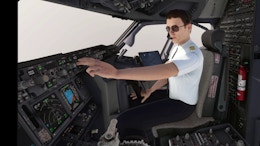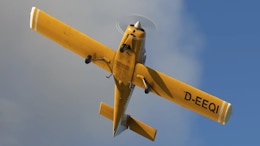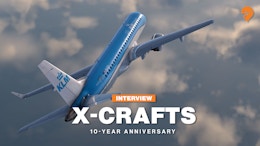Since arriving on the flight sim scene in 2021, Black Square Simulations has been making a name for itself by developing high-fidelity add-ons with an eye toward detail. Recently, their attention has been on aircraft simulations with their analog cockpit overhaul collection for the Bonanza, Baron, Caravan, and King Air. These add-ons bring sought-after interior and panel upgrades as well as detailed systems, avionics, and failure modeling, adding a new dimension of realism and immersion for the default MSFS aircraft. For many, the analog gauge overhaul collection has breathed new life into their virtual flying.
Black Square’s TBM 850 gives flight simmers a completely new airplane in the same vein as their analog cockpit upgrade collection. Version 1.1 of the add-on brings with it a lengthy list of improvements and features, warranting another in-depth look at this airplane. In its marketing, Black Square has even called the TBM 850 their “most technically advanced aircraft simulation” to date. But does the newest version of the TBM live up to expectations and bring the same level of immersion the community has come to expect from Black Square’s other products? Let’s see how it stacks up!

TBM 850 History & Background
The TBM series of single-engine turboprop aircraft was born from a collaboration between the American Mooney Airplane Company and French light aircraft manufacturer SOCATA (now Daher). The initial design prototype, designated the TBM 700, first flew in 1988 with deliveries starting two years later in 1990. The aircraft quickly became a success with its performance and capability praised by owners and operators. SOCATA continued to improve the TBM 700 with several different configurations and models introduced in the 1990s. From this, the TBM 850 was born.
TBM 850 is the production name assigned to the TBM 700N. One of the primary design improvement goals of the TBM 850 was to increase high-altitude cruise performance but leave takeoff and initial climb performance the same. To accomplish this, SOCATA chose the Pratt & Whitney PT6A-66D turboprop engine, flat-rated to 850 shp (634 kW). Torque-limited on takeoff to 700 shp (522 kW), the extra performance is enabled through a fourth flap level detent, labeled “850”, which disengages the torque limiting system and provides the full amount of power at cruise. The TBM 850 can hit 320 knots (593 km/h) in optimal conditions, bettering the TBM 700 by 27 knots (50 km/h). With a service ceiling of 31,000 feet, the TBM 850 can also climb above weather that other 6-place personal aircraft would struggle to avoid.
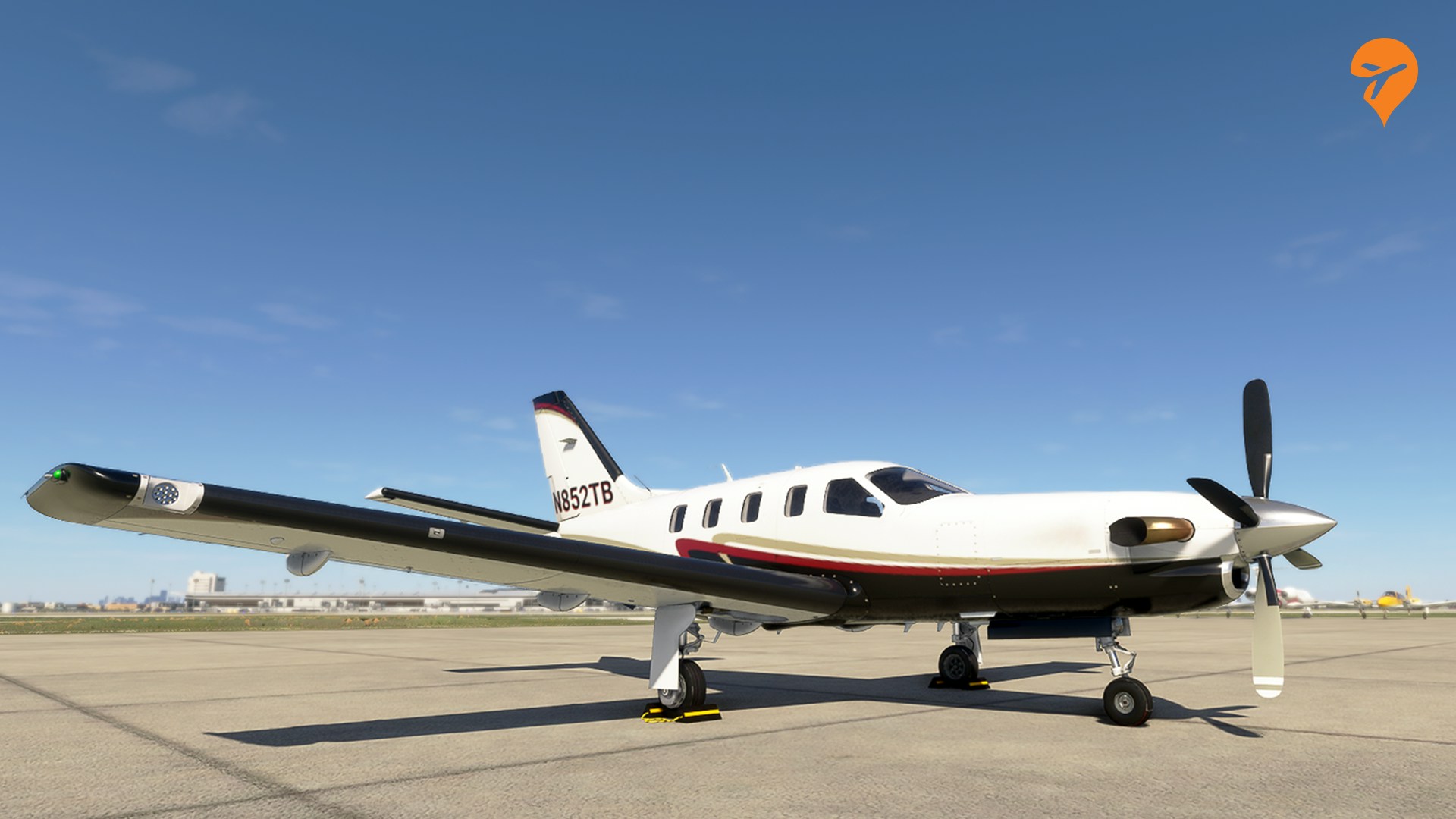
Microsoft Flight Simulator users are no doubt familiar with the TBM lineup with the inclusion of the TBM 930 in the Standard, Deluxe, and Premium Deluxe versions of the game. While both aircraft share a common lineage, the TBM 850 and the TBM 930 are separated by nearly a decade of aircraft design evolution. Not surprisingly, this gives the TBM 930 an advantage in performance, range, and especially glass cockpit avionics.
Let’s be honest, many flight simmers will be quite content cruising the virtual skies with the TBM 930 using its default systems and G3000 glass cockpit – it’s no doubt a fun plane to fly. However, Black Square’s TBM 850 aims to serve a market for flight sim pilots who demand greater systems depth and fidelity; Pilots who appreciate things like a fully functional analog flight deck and operating a virtual turboprop engine within its real limitations to avoid catastrophic failures. With that in mind, let’s dive into the Black Square TBM 850.
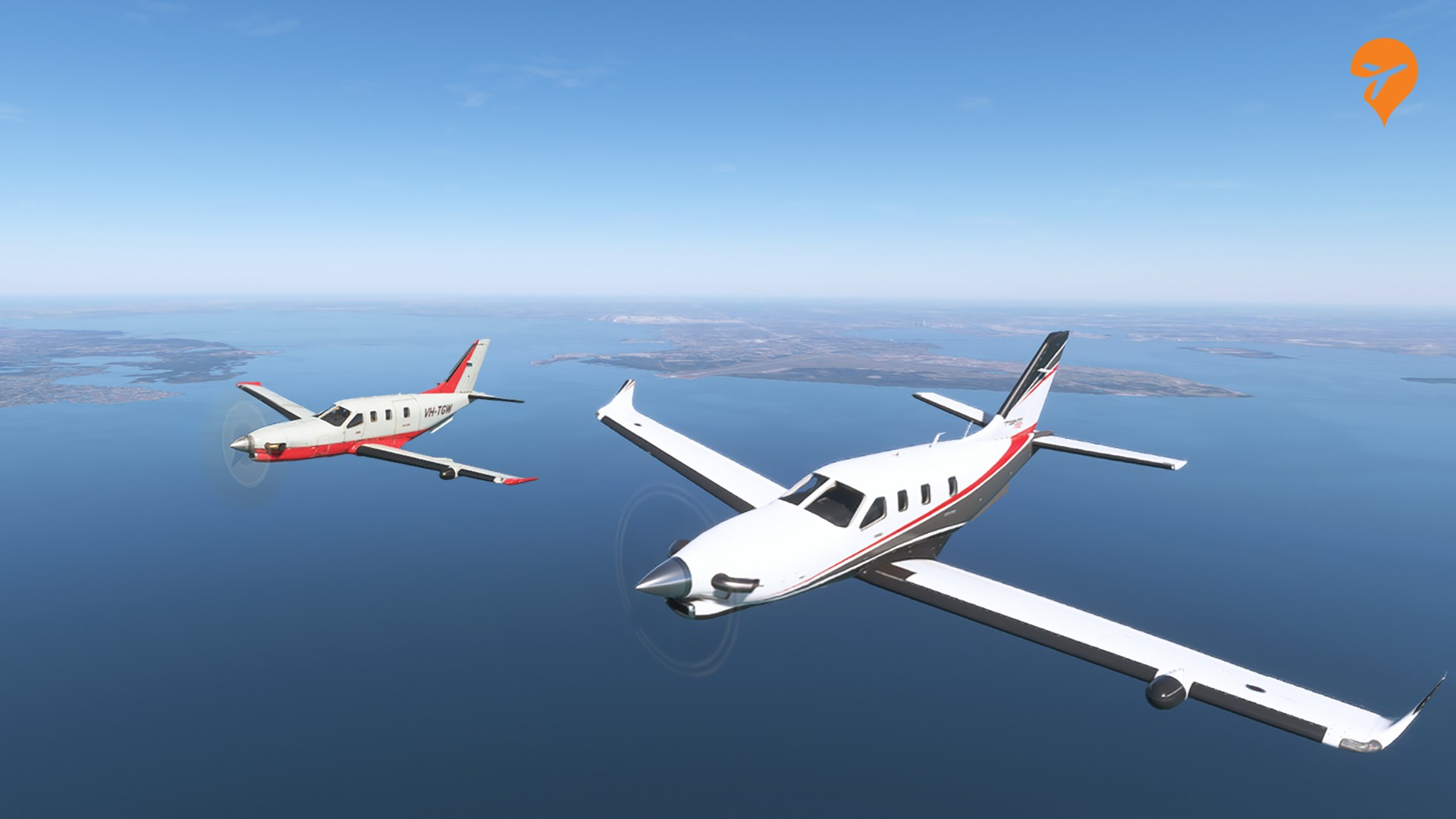
Installation & Setup
Installation of the TBM 850 is straightforward and comes in the form of an installer downloaded from your justflight.com account. Authentication and installation location are handled via the installer. Once installed, the aircraft and its seven paint schemes are installed into MSFS. The TBM 850 features Black Square’s dynamic tail number system allows third-party paint scheme creators to control the appearance and position of the tail number using a configuration file entry. This also works with the included paint schemes to make for a more realistic-looking registration number when using the MSFS aircraft customisation menu.
The TBM 850 includes six paint schemes (plus one blank, all-white paint scheme for livery makers to modify). I found the included paint schemes to be detailed and realistic, based on real-world TBM 850 paint options. Of course, many additional repaints are available on the various community file-hosting websites.
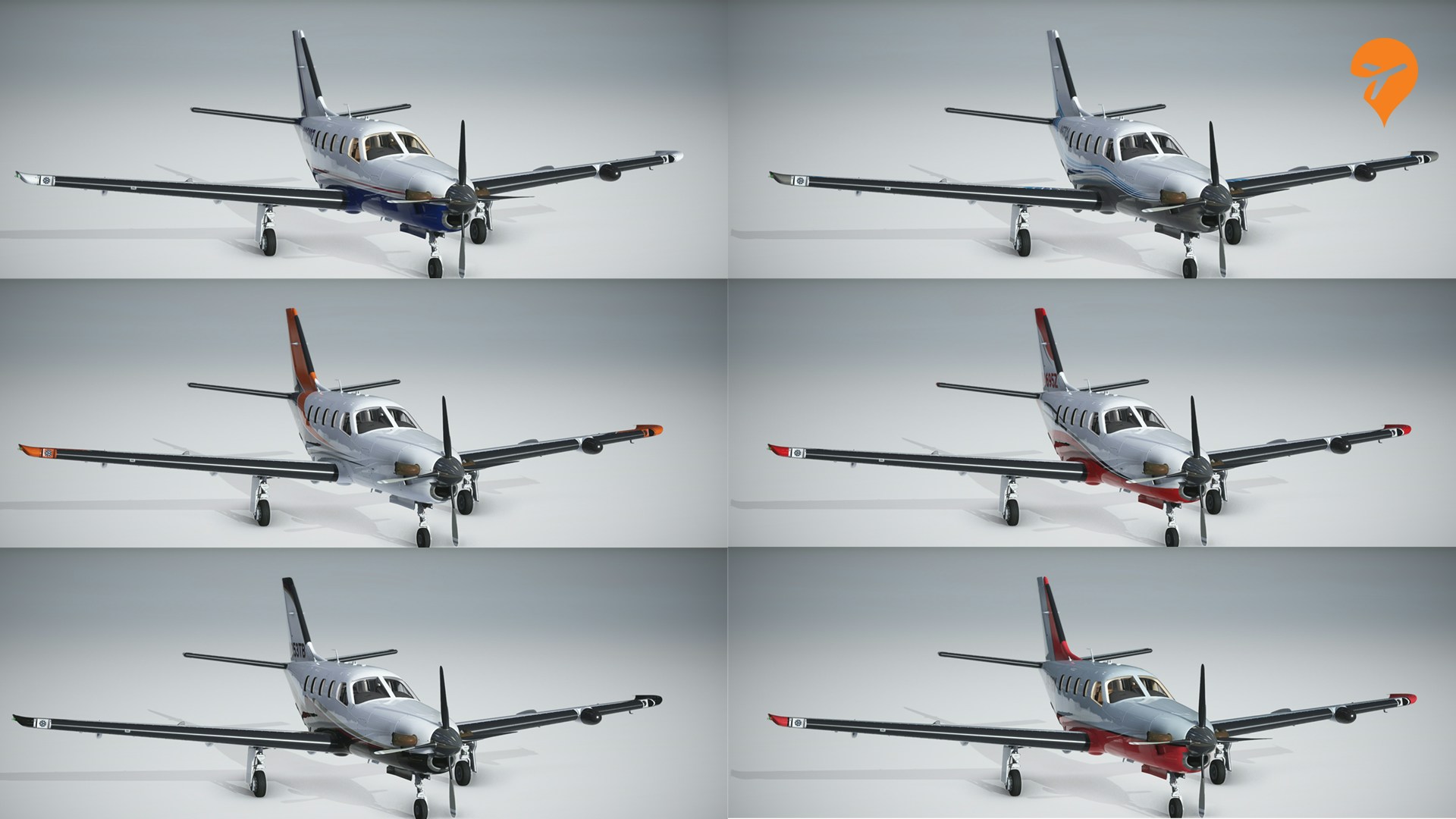
Documentation
A 109-page manual is available via JustFlight.com’s product support page. The manual covers, in detail, every piece of included avionics and equipment. If that’s not enough, JustFlight has published a series of short video tutorials covering the TBM 850’s failure modeling, environmental and electrical systems, and engine and beta range operation.
Avionics
The aircraft Black Square chose to recreate is a 2006 TBM 850 equipped with contemporary avionics. This means users will find the familiar analog gauge flight deck for which Black Square is known. The centre stack is dominated by the dual Bendix/King EFS 40 Electronic Flight Instrumentation System (EFIS) displays. These CRT displays are known to take time to warm up to full brightness in colder temperatures, a detail that Black Square has modeled. The EFS 40 also features a composite “CMPST” mode that provides redundancy in case of a display failure, but more on failures later.

An unobtrusive switch control is located on the instrument panel to select between different radio navigation equipment. This includes the Garmin GTN 750 (PMS or TDS), Garmin GNS 530, Bendix/King KX-155B, and KNS-80 RNAV Navigation System. Swapping radio navigation equipment is instantaneous and convenient. Configuration options are shown below:
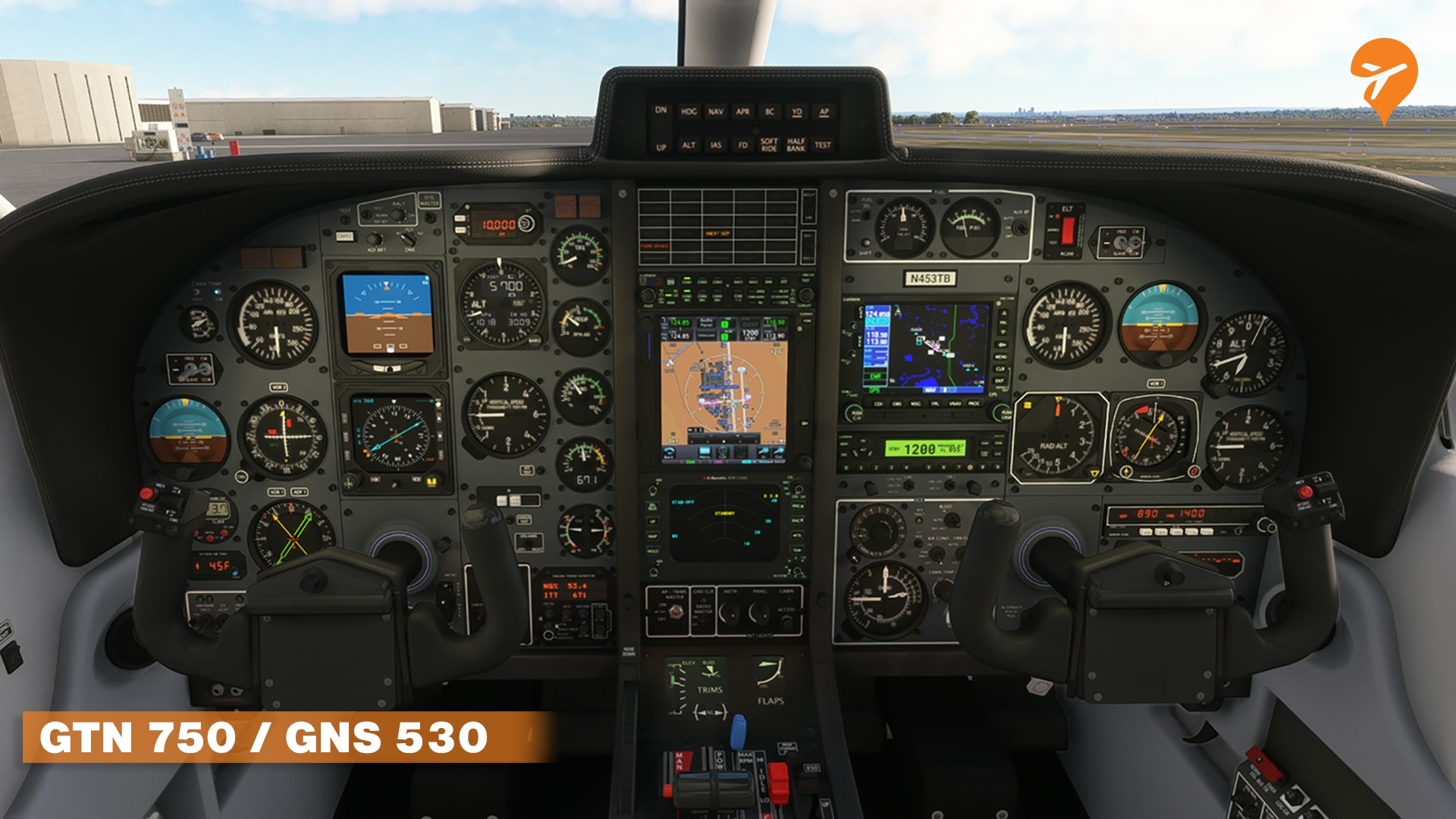
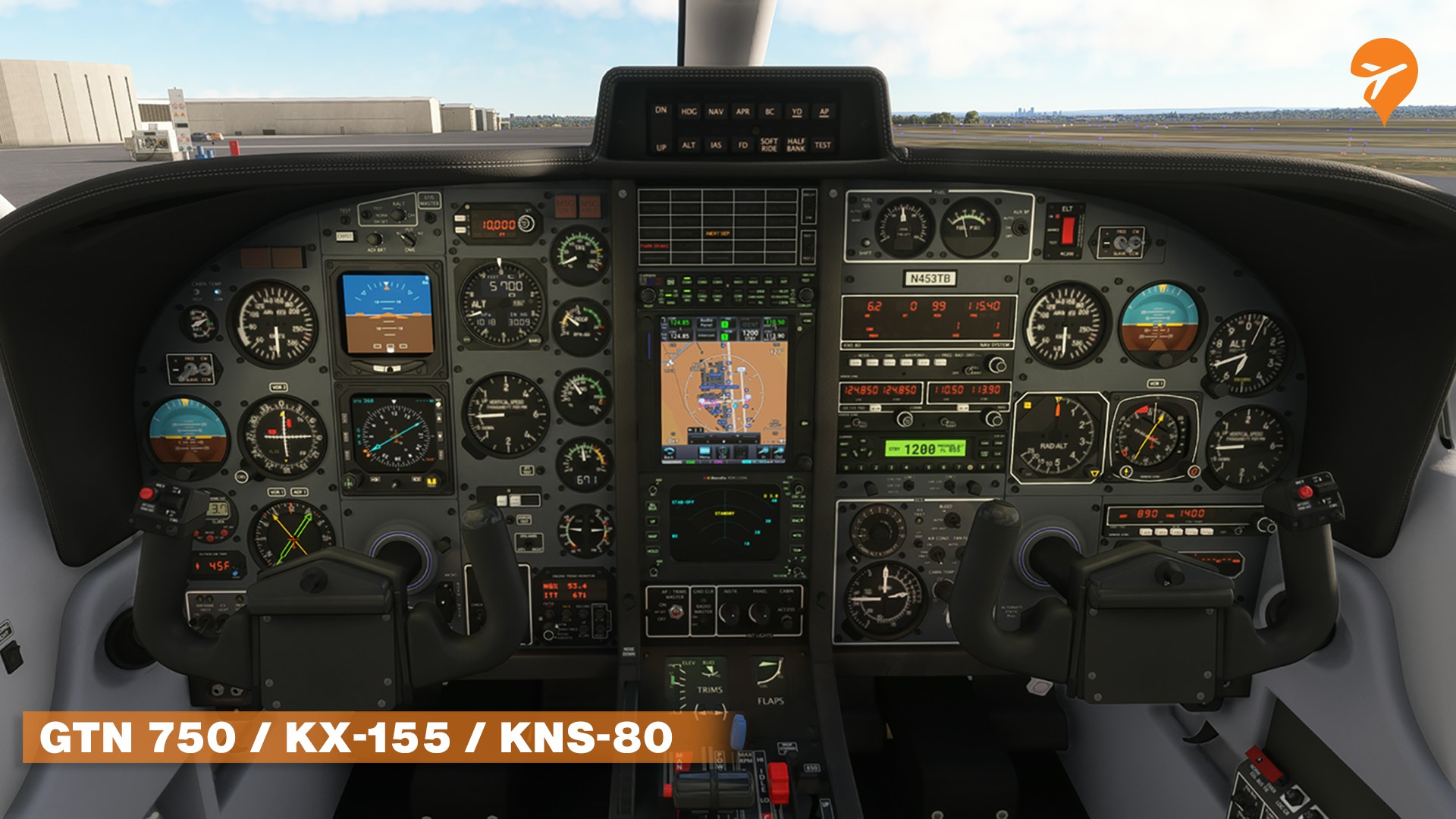
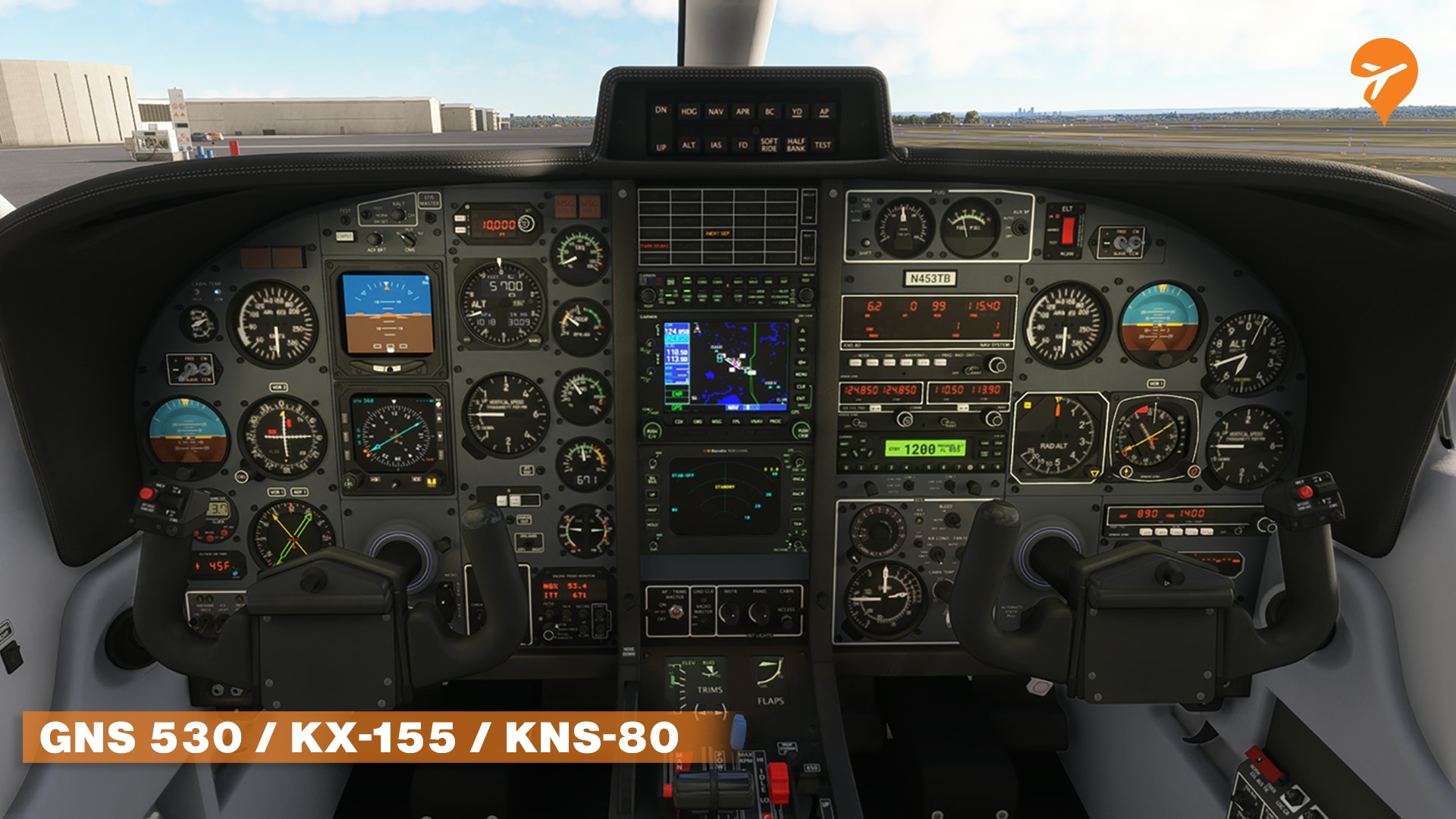
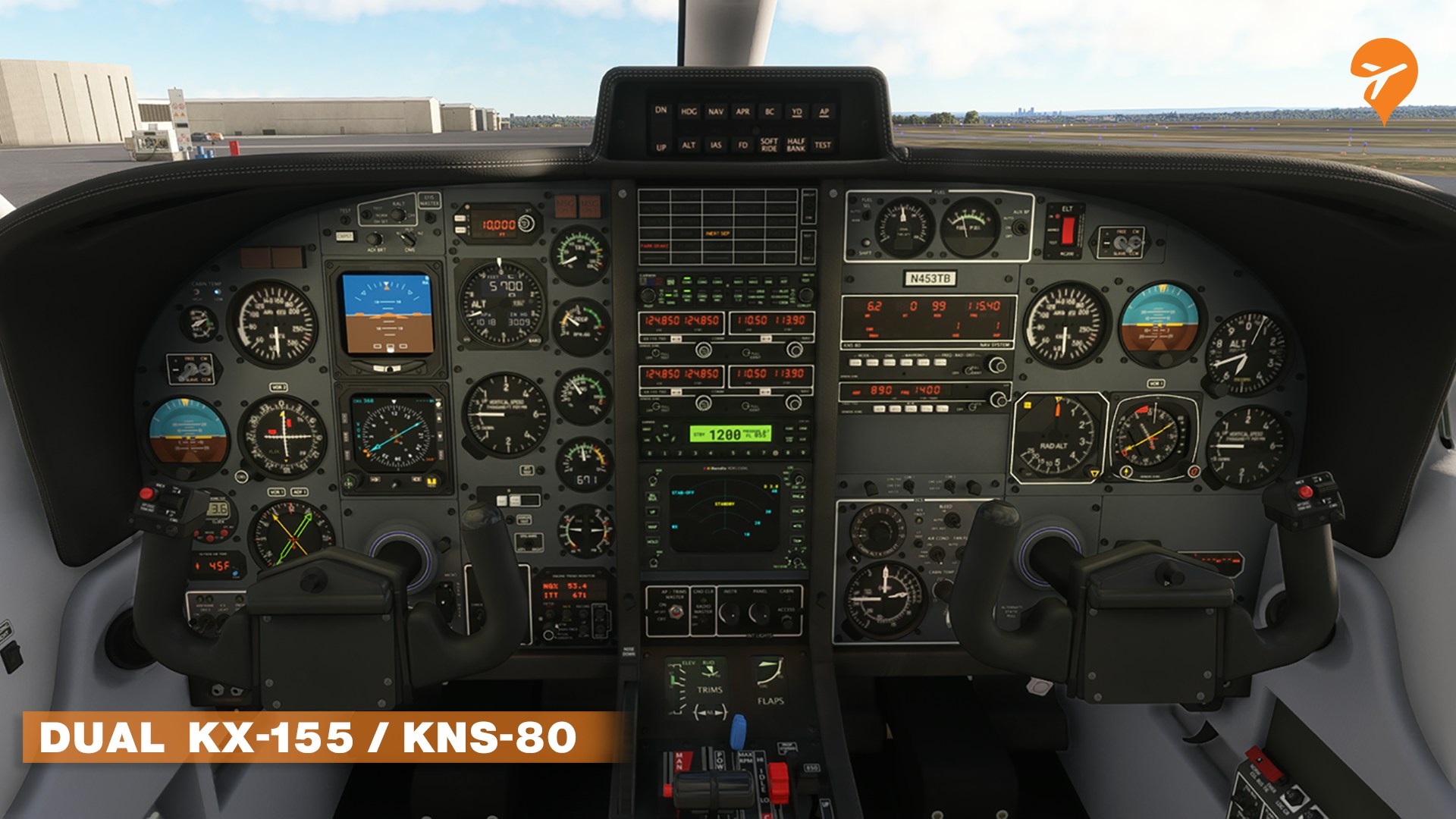
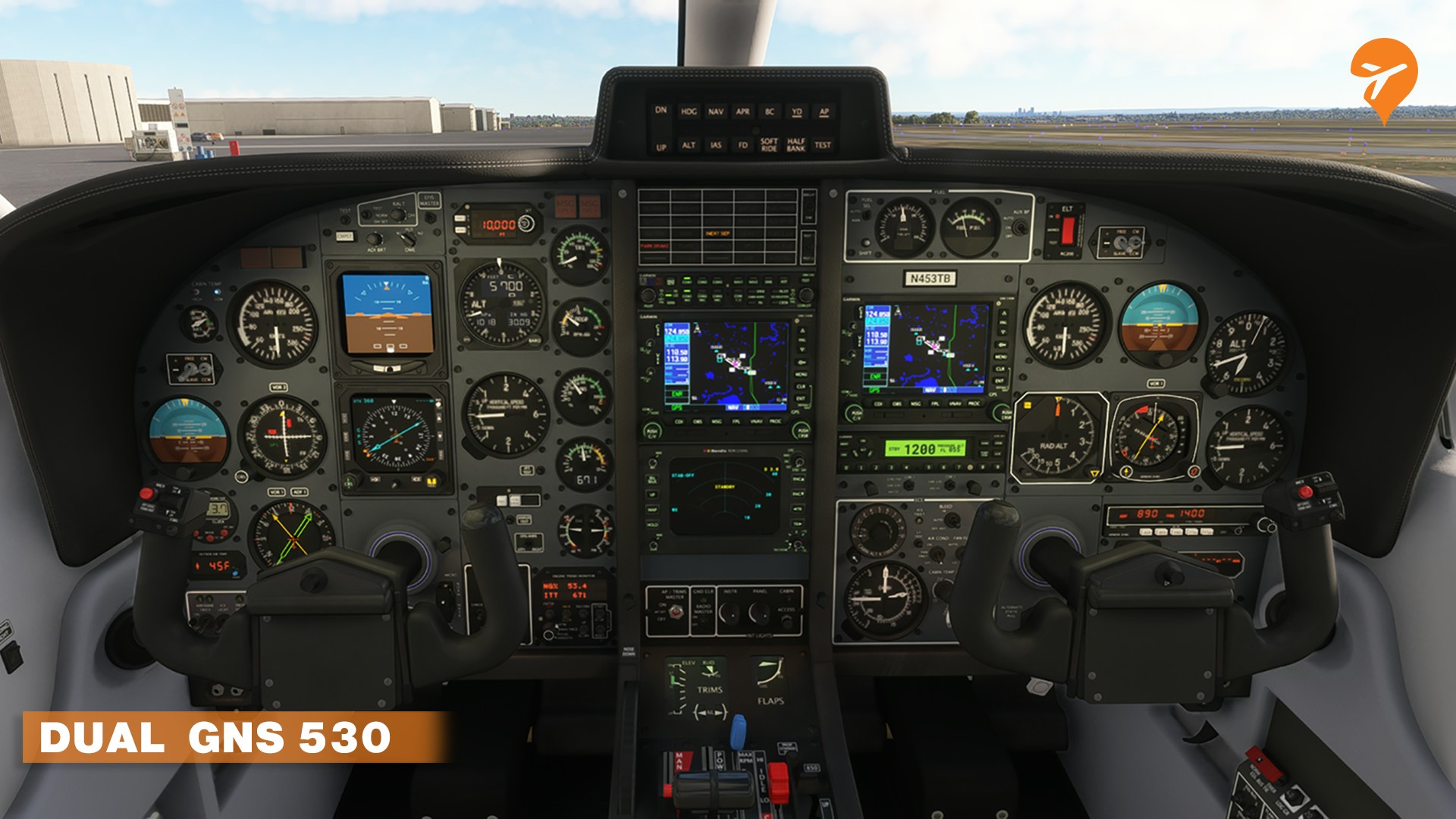
Other equipment in the TBM 850 includes:
- Bendix/King KR 87 ADF
- Bendix/King KDI 572R DME
- Bendix/King KFC 325 Autopilot (KMC 321 Mode Controller)
- Bendix/King KAS 297B Altitude Selector
- Bendix RDR-1150XL Colour Weather Radar
- Garmin GTX 327 Transponder
Perhaps one of the more easily overlooked items Black Square has chosen to install in the TBM 850 is the Shadin Avionics ETM Engine Trend Monitor. This is an instrument that we haven’t seen much of, if any, in the flight sim world — a world where fuel and maintenance cost nothing. For real-world operators, however, the data collected by this instrument is priceless. Black Square’s decision to include the Shadin ETM in the TBM 850 shows its commitment to realism and authenticity. A good engine trend monitor gives operators real-time insight into the health of their investment and with the overhaul cost of the PT6 engine often exceeding $500,000 (457,157 EUR), one can quickly realise the necessity of monitoring engine health.
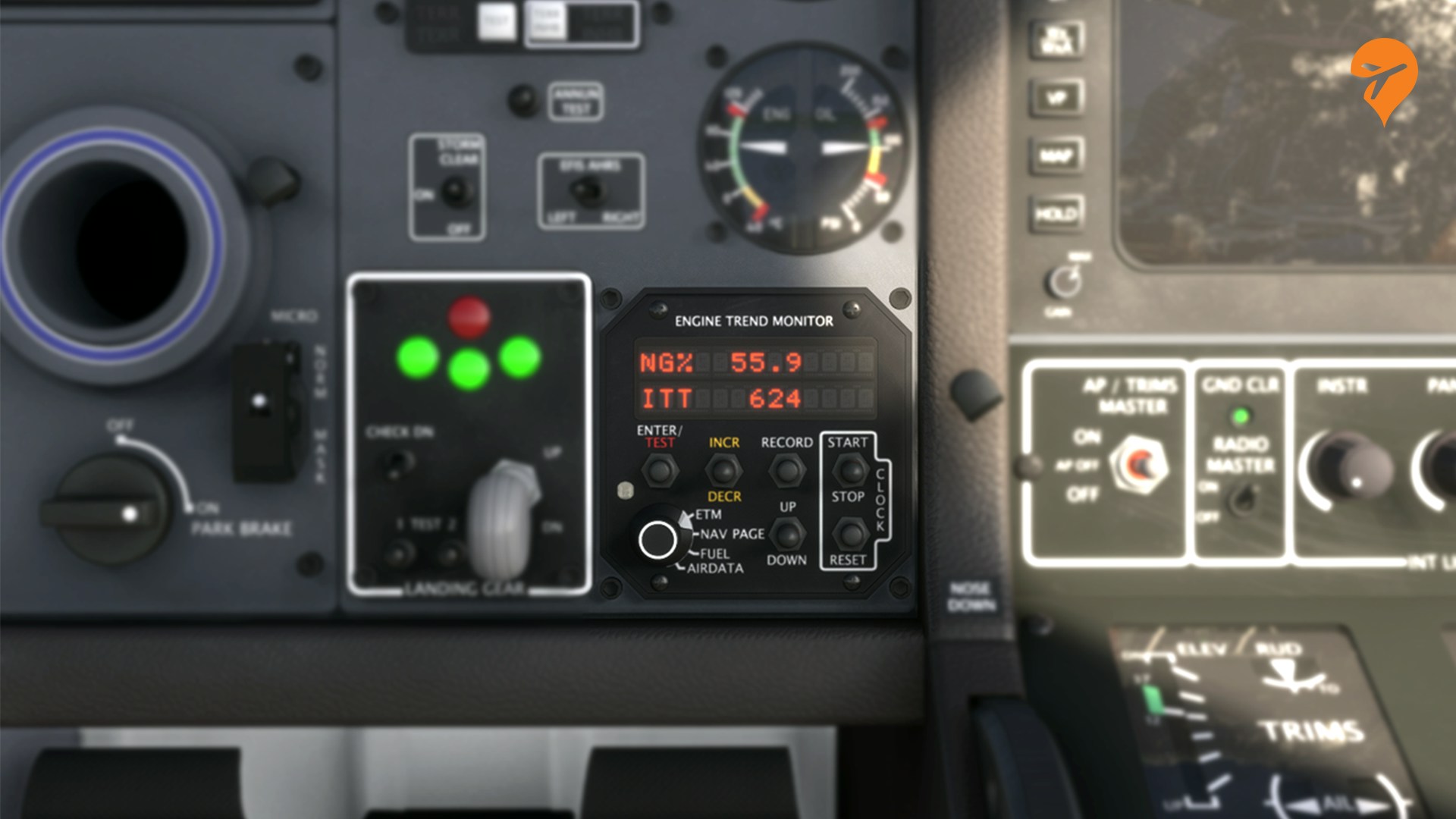
Like the majority of the instruments Black Square has modeled for the cockpit of the TBM, the functionality of the ETM is a near 1:1 representation of the real unit. While it is most often used as a real-time, digital reference for engine NG percentage and ITT, Black Square has built into the unit a remarkable amount of functionality and systems depth. Engine trend information, navigation data, fuel and flight planning, aircraft sensors, and flight data can all be accessed via the instrument’s toggle controls, just like in the real unit. For extra realism, I would love to see the ETM’s data made available via a log file or other output format, but it doesn’t appear that anything is captured for use outside of the sim.
Systems Simulation & Depth
Black Square states that the TBM 850’s flight model was developed to utilise the most up-to-date features available in MSFS, including CFD propeller and stall physics, and improved ground handling. In my testing, I found the handling of the TBM to be rather well-mannered except for the stall characteristics, which produced a pronounced break and wing drop in coordinated flight.
Turbine dynamics (ITT, TRQ, Ng, Fuel Flow, Inertial Separator operation) are custom-made for the TBM and generally very good. Pilots need to pay attention to torque and temperature limitations or run the risk of experiencing Black Square’s failure modeling. Hot starts are possible and also require immediate action. Engaging the PT6’s inertial separator causes a reduction in the air entering the engine as the separator vanes and instead diverts it before entering the intake plenum. Black Square’s TBM 850 models the operation of the inertial separator with a reduction in engine torque. However, the corresponding increase in ITT (due to the reduction of cooling airflow) wasn’t obvious in my testing.
When it comes to aircraft performance, Black Square’s claim that the TBM 850’s takeoff, climb, and cruise performance matches POH values “within 2%” was accurate in my testing.
Failure Modelling
For many flight simmers, failure modeling adds a new level of realism with operational consequences to how well you treat the airplane. Black Square has modeled this with options for failures based on wear, MTBF (mean time between failures), and randomly occurring and scheduled failures for nearly every component in the aircraft, many with multiple different failure modes. There are nearly 100 possible failures, ranging in severity from electrical component failure to total engine failure. For those who prefer to fly the TBM 850 in a “no failures” mode, Black Square has accommodated that as well. All failures can be configured and cleared using the Nav option of the Bendix RDR-1150XL Colour Weather Radar – a clever yet simple solution.

Visual Model & Animations
Black Square modeled the TBM 850 using hundreds of reference photos and technical documents. Both the inside cabin and exterior of the aircraft reflect the attention to detail. The cockpit instruments are crisp and detailed with realistic reflections on the glass instruments. Instrument panel night lighting is equally well done and controlled via two cockpit rheostats. Cabin night lighting is available via switchable floodlights. Exterior lighting includes the typical strobes, nav, landing, and taxi lights, as well as ice lights and selectable landing light Pulselite®.
The TBM 850’s external model features opening cockpit, cabin, and baggage compartment doors that can all be toggled through various click spots. Interior and exterior textures are high-resolution without any glaring low-poly areas. If anything, textures may be a bit too “clean” for some users, lacking the wear typically present in an aircraft of this vintage. Black Square has also chosen to model the PT6 engine, which is visible when either side of the engine cowling is open (the engine visual model is not rendered when both cowlings are closed).
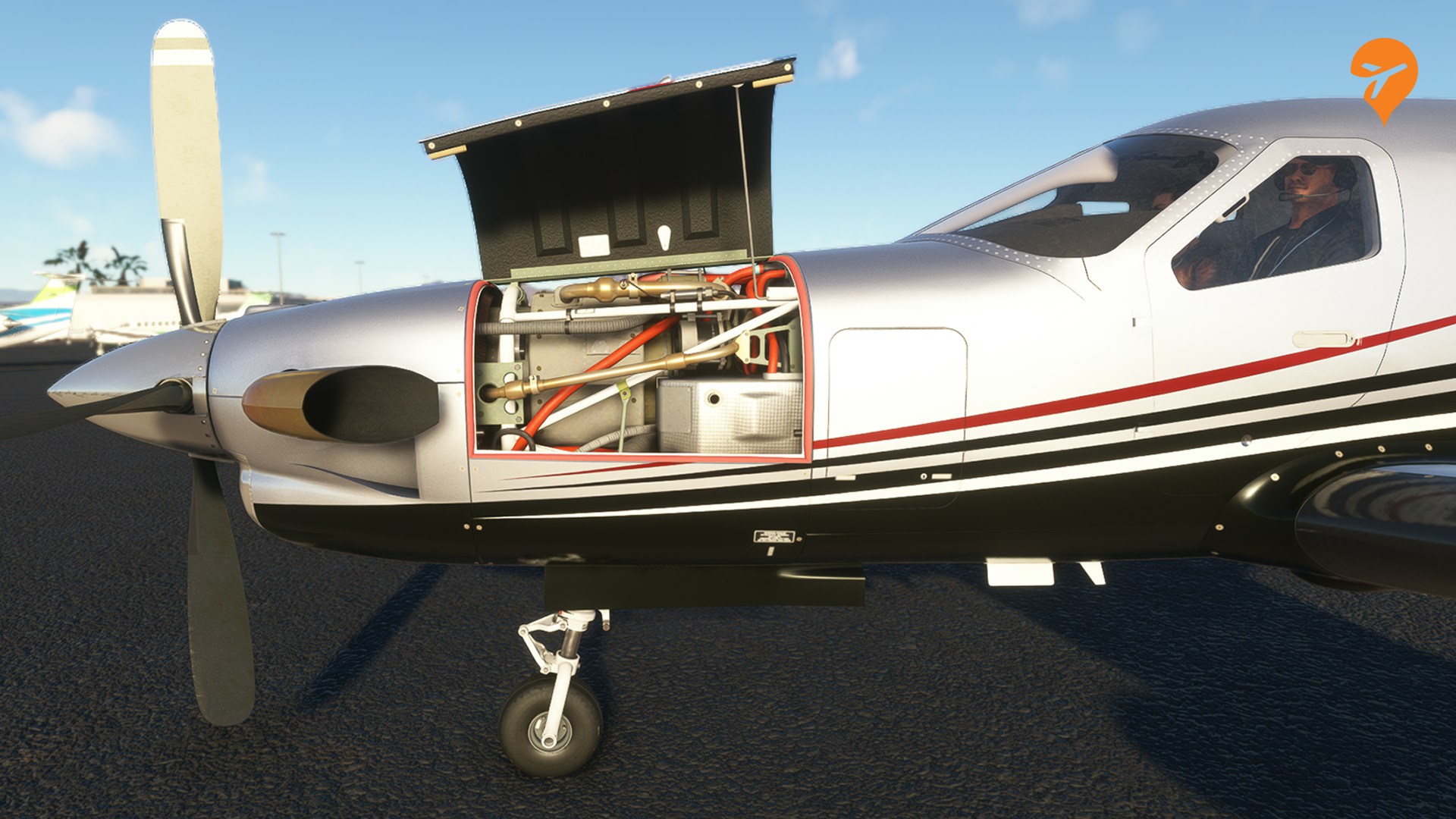
Landing gear retraction and control surface animations are smooth and accurate. Wheel bays are detailed and labels are legible. Some static elements are available, too, and Black Square has come up with clever ways to toggle their visibility. For example, clicking the aft seat area places chocks in the external view. I would have liked to see more “remove before flight” static elements such as intake covers and a prop anchor. Animated deicing boots have been added with the latest service release and their effect is generally convincing.
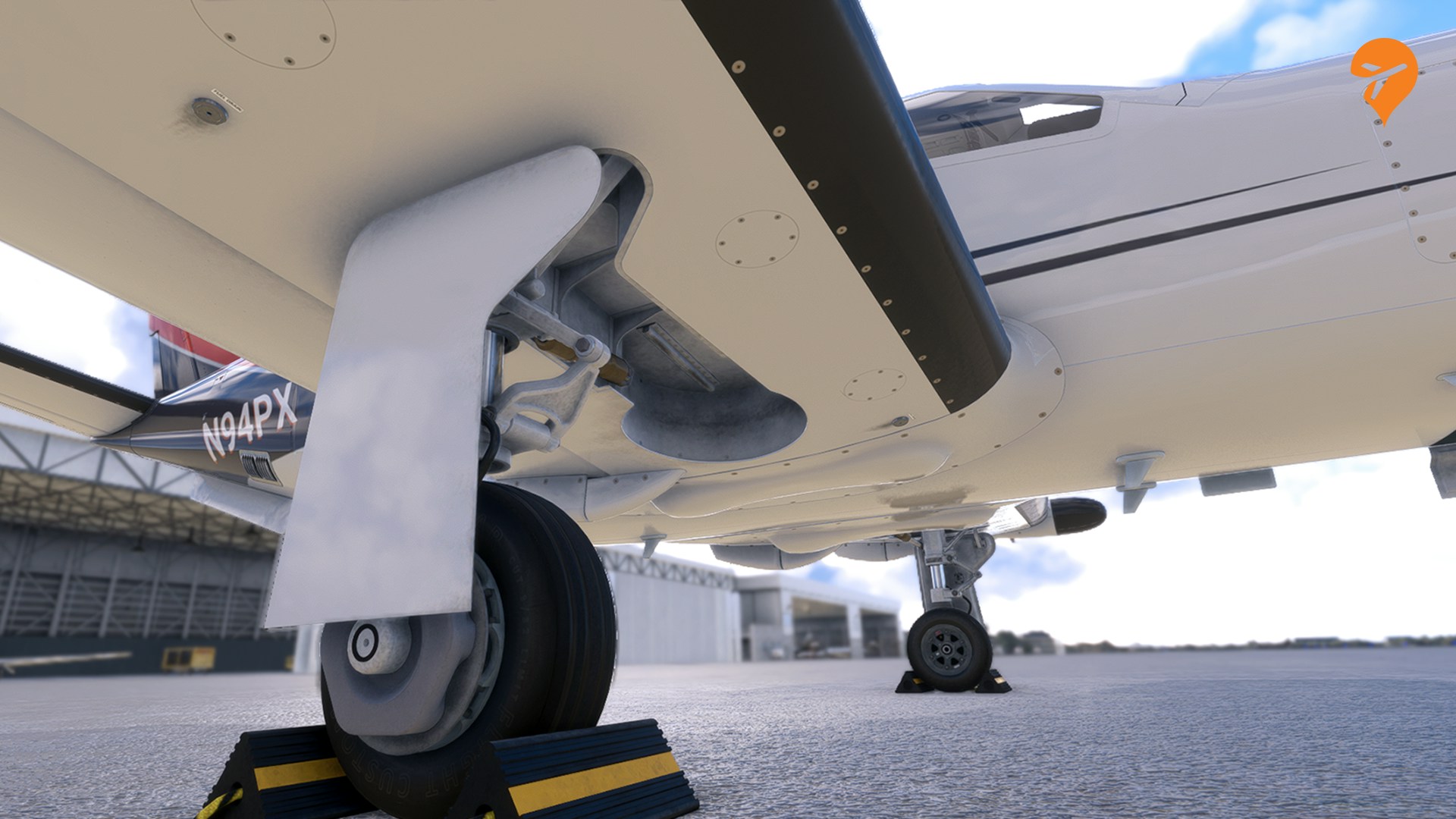


Cockpit frame rates using my lower-end PC (Intel i7-9700K, RTX 2080 Ti) were acceptable at all times. However, as all of us know, FPS impact is highly dependent on PC specs, simulator settings, weather, traffic, etc.
It is worth noting that unlike many of its competitors, Black Square did not model a tablet with which pilots could interface with external animations, toggle avionics options, and integrate flight planning activities. While this may seem like an omission, the lack of a tablet is reasonably realistic considering the vintage of the aircraft itself and it did not detract from the majority of my flights in the TBM 850. Further, Black Square has “hidden” the avionics configuration and external animation options in a way that does not detract from the immersion.
Flying the TBM 850
Loading the TBM 850 in Microsoft Flight Sim using a non-runway as the startup location, we’re met with a cold and dark cockpit, just as we typically would have if we had climbed aboard the real aircraft. The TBM 850 doesn’t provide a set of startup scenarios to choose from such as “cold and dark”, “ready for engine start”, or “ready for taxi”, etc. However, through what Black Square calls “selective state saving”, settings such as radio configuration and memory presets, oxygen tank pressure, cabin environmental controls, sun visors, and armrest positions persist from flight to flight. Engine health is also saved between flights and can be monitored via the RDR-1150XL Weather Radar interface.

Using the engine start checklist found in the manual to power up the aircraft is a relatively easy process. Speaking of electrical power, Black Square has simulated nearly every aspect of the TBM 850’s electrical system (that’s 15 electrical buses and 85+ circuits!). Custom calculations within the simulator and interactive circuit breakers impact the electrical load and operation of corresponding systems. A voltage and amp meter allows you to monitor the state of the electrical systems throughout the flight and take action if a failure is detected.
When the starter is engaged, instruments and cockpit lighting briefly dim as the starter motor begins rotation of the compressor – details afforded by the electrical system calculations developed by Black Square.
Fuel is introduced to the engine at the appropriate time and lightoff occurs just like it does in the real PT6 thanks to Black Square’s realistic turbine simulation. However, in my testing, I found the startup ITT indications were slightly incorrect. In the PT6A-60 series used by the real TBM 850, fuel is provided to the engine via 14 fuel nozzles. During startup, a subset of primary nozzles is used (seven, in the case of the -60 series). This effectively lowers the startup temperature by reducing the amount of fuel flowing into the combustion chamber while the engine is operating at a relatively low speed. Once adequate airflow is achieved (at around 35% NG), fuel is introduced by the remaining secondary fuel nozzles. This results in a “double spike” of ITT during the engine start which, honestly, I expected to see in Black Square’s modeling but it was absent.
The TBM’s ground handling is well-mannered thanks to the implementation of Black Square’s custom beta range which is activated by the lower 15% of throttle travel. Moving the throttle into this propellor beta range slows the aircraft just as it should, ensuring that the aircraft won’t “run away” on the taxiway and virtually eliminating the need to ride the brakes as is the case with other turboprop add-ons.
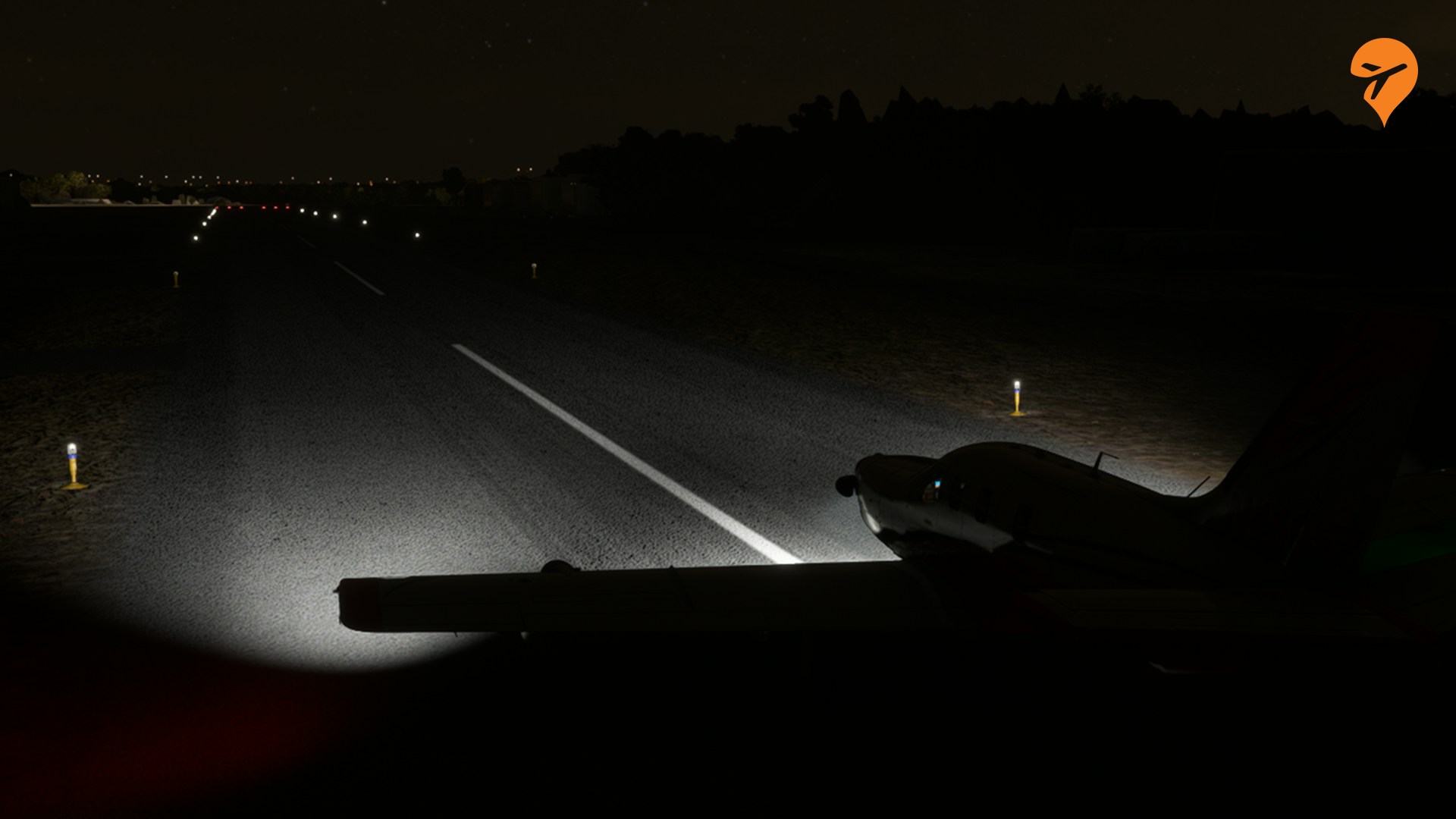
Starting the takeoff roll, the TBM 850 accelerates briskly and has no trouble getting off the ground in under 3,000 feet (914 m) at max weight. Takeoff engine performance tables found in the included documentation involve setting 100% torque and 2,000 RPM. In crosswinds, with appropriate control inputs (including rudder trim), directional control is easy to maintain and the plane doesn’t drift excessively during the takeoff roll. This solid, heavy feeling is a theme to flying the TBM 850 and something Black Square concentrated on improving with the aerodynamics improvements introduced in the version 1.1 update.
Surely the magical moment for any TBM 850 pilot is as the airplane is cleaned up and climbing away from the departure airport and the flap lever is moved into the “850 detent”. This disengages the torque limiting system allowing the full power of the PT6A-66D to be available for climb and cruise. Pilots still must pay close attention to the engine instruments and observe the limitations of 121.4% torque (TRQ) and 840°C ITT to avoid an engine parameter exceedance, and thanks to Black Square’s turbine engine logic, torque decreases and ITT becomes the limiting performance factor as the aircraft climbs. In my testing, it was possible to climb, albeit slowly, to the airplane’s service ceiling of FL310 at max takeoff weight. However, as with most single-engine airplanes, expect to choose between taking full fuel or filling all six seats passengers.

I’m accustomed to paying for fuel in my real-world flying, so I tend to operate aircraft in the sim with the same economic mindset. Cruising in the mid-20s, I will reduce the TBM 850’s power back to a reasonable 50 GPH (189 liters per hour) or 330 PPH. With this power setting, one can easily achieve 280 knots of true airspeed, and with full fuel, over 5 hours of endurance with IFR reserves.
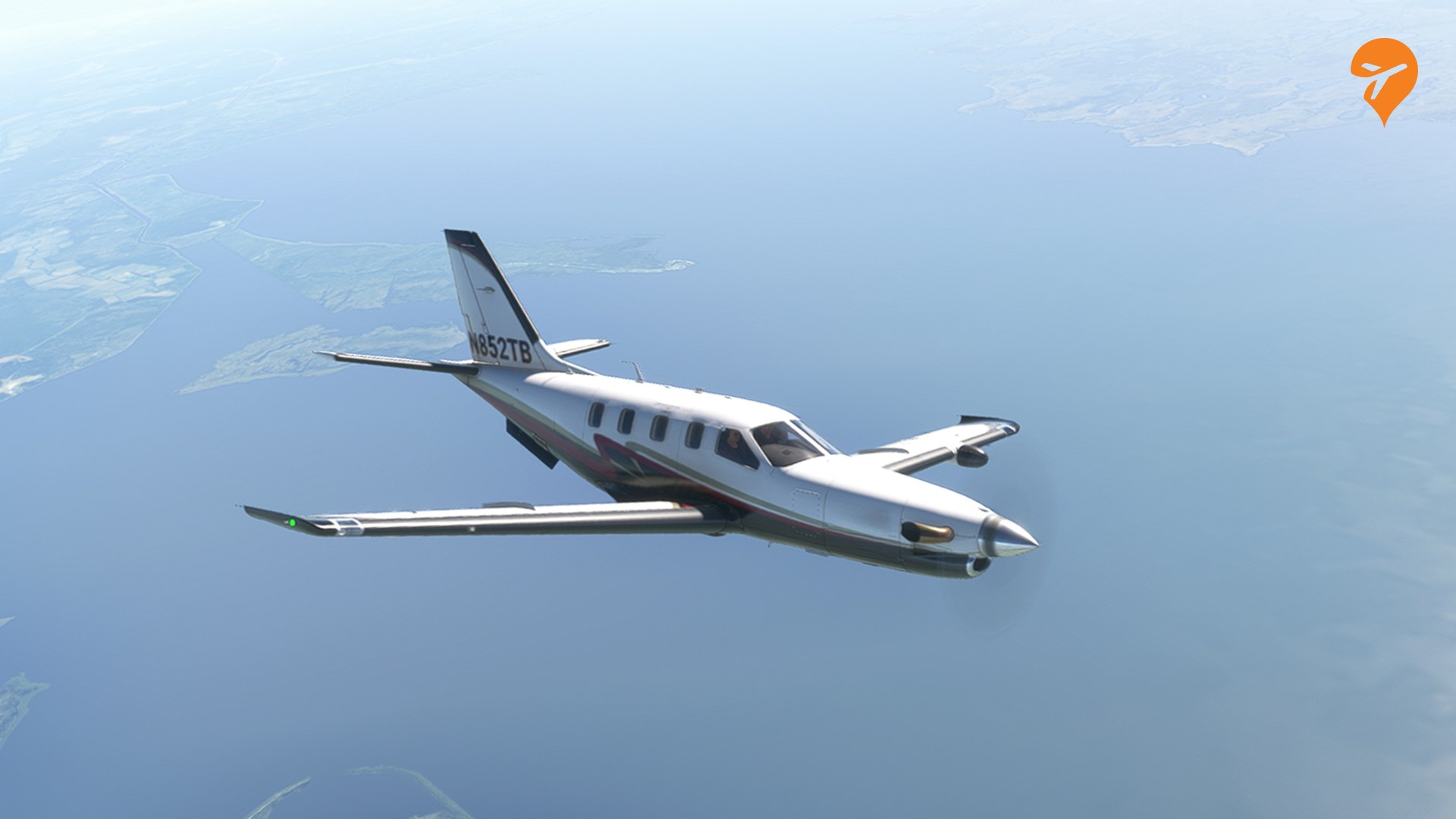
All of the TBM series can mix it up with jet traffic on arrival and approach but like most turboprops, expect to be vectored out of the way of the faster jets in crowded airspace. Slowing down on approach is not a problem with those large trailing edge flaps, and with MSFS’s overly aggressive interpretation of propeller reverse thrust – which isn’t part of Black Square’s modeling – stopping in well under 2,000 feet (610 meters) is routine.
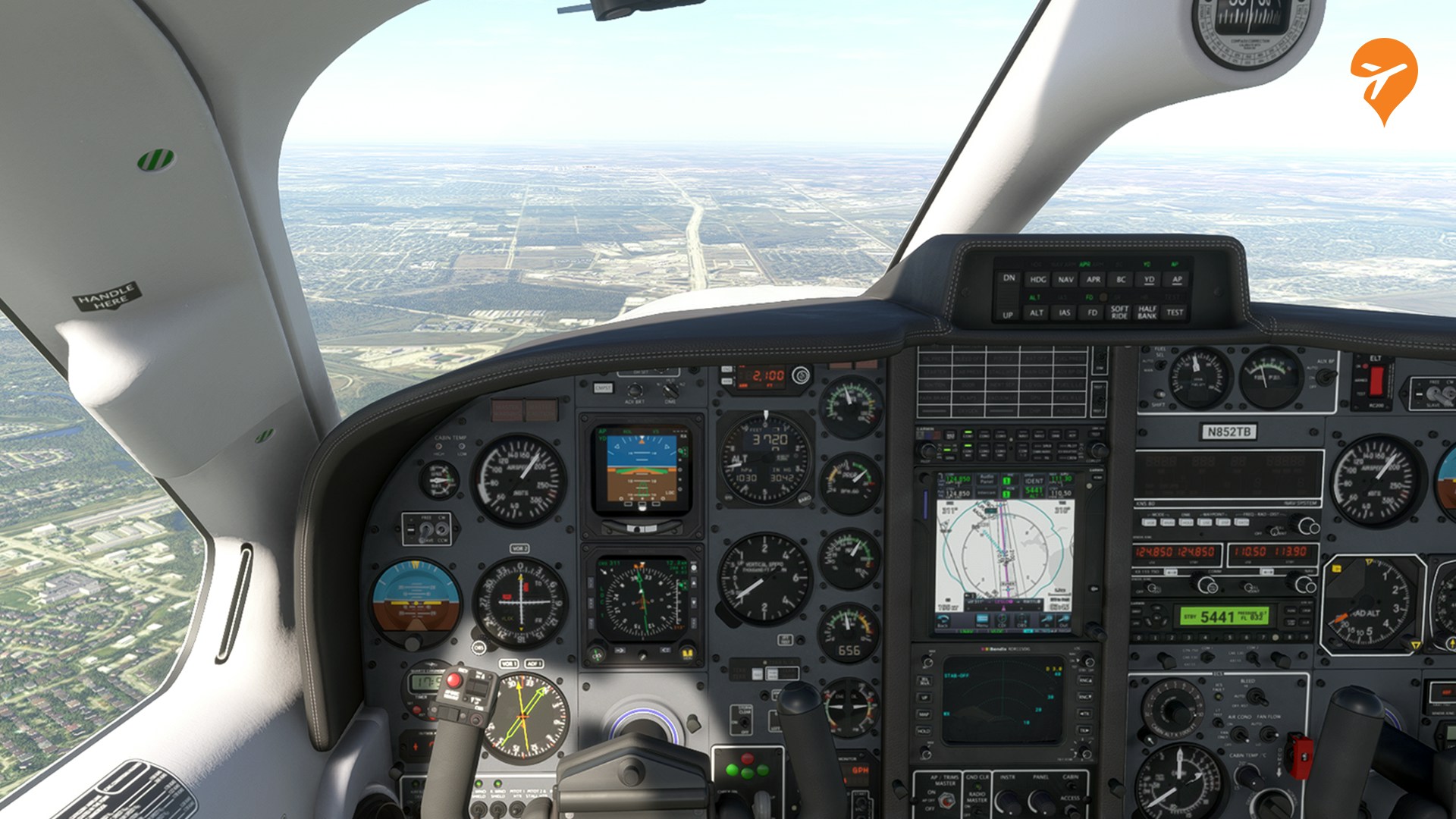
Perhaps my biggest criticism of the TBM 850 is with the sounds. Specifically, the landing rollout and shutdown sequence. The TBM 850 uses a customised version of the default TBM 930’s soundset, and as such, leaves a bit to be desired. For example, the unmistakable low “woosh” of propeller beta and reverse thrust is barely recognizable. Also missing are realistic turboprop shutdown sounds (interestingly, the engine start sounds are relatively spot-on). Pulling the propeller into feather and the condition lever into cut-off results in only a minor change in engine sounds followed by several seconds of continued “engine at idle” sound before the engine and prop visuals spool down and engine noise fades out. To be fair, the TBM 850 isn’t the only MSFS turboprop in which I’ve experienced this, but I do see room for improvement in the airplane’s soundset.
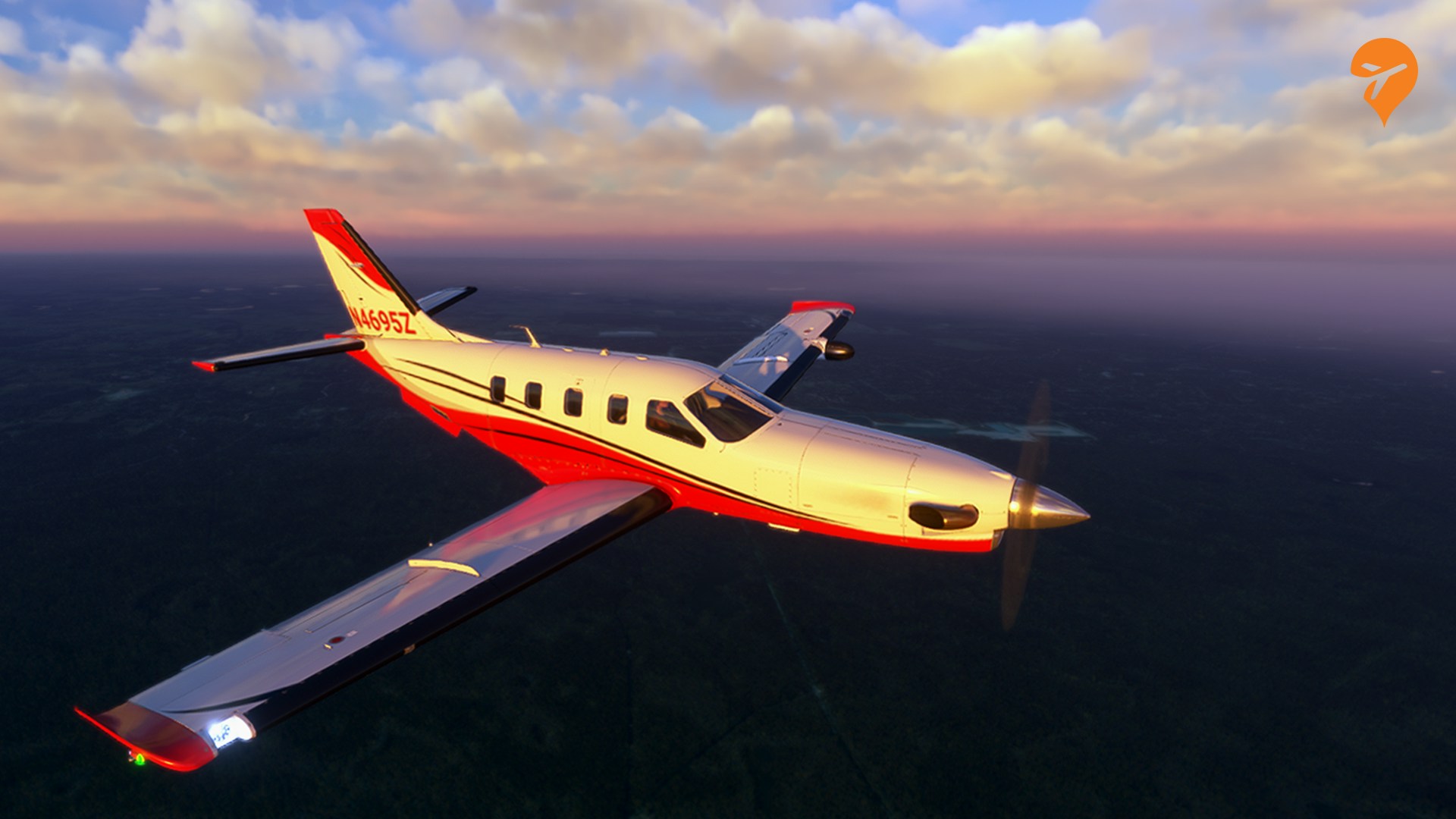
Final Thoughts
We’ve seen a lot of great single-engine turboprops released for Microsoft Flight Simulator in recent months and the TBM 850 finds itself in an increasingly crowded space where it is among the priciest options. However, if you’re looking for an add-on that will immerse you in the perfect combination of glass cockpit capability and old-school, analog systems, then this airplane is it. Combine that with Black Square’s extreme attention to detail, systems depth, realistic performance, and failure modeling, and your money will be well spent on the TBM 850.
Getting back to the claim that the TBM 850 is Black Square’s “most technically advanced aircraft simulation”. After putting the plane through its paces for this review, I don’t think this claim is hyperbole. The Black Square TBM 850 embodies what we should expect from a quality MSFS add-on. While it doesn’t feature the latest glass cockpit or a high-tech EFB, the systems it does possess are obsessively detailed to look and act like their real-world analogs. A developer setting a high bar for realism is welcome news for anyone like me who wants authenticity in their sim experience. Perhaps even better news is that Black Square has alluded to the fact that new technology and features debuting in their upcoming aircraft, the BE60 Duke, will likely be back-ported into the TBM 850 (and possibly other, previous Black Square releases), making this an add-on that might get even better over time.





